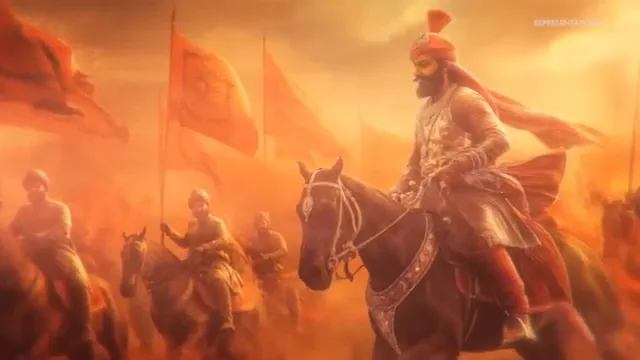A Deep Dive into Historical Narratives: Shivaji and Aurangzeb
Understanding the complexities of historical narratives is vital in appreciating the legacies of significant figures like Chhatrapati Shivaji Maharaj and Aurangzeb. This blog explores the contrasting historical accounts in the context of Aurangzeb vs Shivaji Maharaj and their implications on contemporary society. By examining their actions and motivations, we can discern the realities behind the myths that have shaped public perception.
Shivaji Maharaj: The Protector of Hinduism
Chhatrapati Shivaji Maharaj is often celebrated as a hero in Indian history, especially among the Hindu community. His rise to power during a time of Mughal dominance marks him as a pivotal figure in the Aurangzeb vs Shivaji Maharaj narrative. Shivaji’s establishment of the Maratha Empire is not merely a story of conquest but one of resilience and strategic brilliance. He embodies the spirit of resistance against oppression, particularly in the face of Aurangzeb’s reign.
Shivaji’s leadership style was characterized by inclusivity. He employed individuals from various cultural backgrounds in his administration and military, emphasizing a governance model that respected diversity. His naval chief, Shama Khan, is a prime example of this inclusivity, showcasing Shivaji’s progressive approach for his time and adding depth to the Aurangzeb vs Shivaji Maharaj discussion.

Aurangzeb: The Controversial Emperor
Aurangzeb’s legacy is fraught with complexities. As the Mughal Emperor, he expanded the empire significantly but also faced criticism for his policies toward non-Muslims. His imposition of the jizya tax and destruction of temples have led to his portrayal as a tyrant in many historical narratives. However, some historians argue that his actions were often misinterpreted in the context of Aurangzeb vs Shivaji Maharaj.
For instance, Aurangzeb’s policies towards the Jain community reflected a nuanced approach to religious diversity. His respect for Jain pilgrimage sites indicates a level of tolerance that contradicts the common narrative of his reign being solely oppressive, further complicating the Aurangzeb vs Shivaji Maharaj dichotomy.
The Historical Context
The historical context of the 17th century is crucial in understanding the actions of both leaders. During Aurangzeb’s reign, the Mughal Empire was at its zenith, while Shivaji was rallying forces to challenge this dominance. The population dynamics also played a significant role, with Hindus comprising a substantial portion of the empire’s subjects.
Historian M. Aathar Ali notes that the Mughal nobility was predominantly composed of Muslims, yet the Hindu population remained significant. This demographic reality influenced policies and governance structures, leading to tensions that would define the era, further highlighting the complexities of Aurangzeb vs Shivaji Maharaj.

Contradictions and Misinterpretations
One of the most striking aspects of historical narratives is how they can be shaped by biases and misinterpretations. The notion of “WhatsApp University,” a term used to describe the spread of misinformation, highlights the need for critical analysis of historical events. Many individuals accept contradictory narratives without question, leading to a skewed understanding of history, especially in discussions around Aurangzeb vs Shivaji Maharaj.
Shivaji’s portrayal as a purely benevolent figure and Aurangzeb as wholly malevolent simplifies a complex historical landscape. The reality is that both leaders operated within their respective contexts, making decisions that reflected their circumstances and the prevailing societal norms.
Shivaji’s Legacy
Shivaji’s legacy extends beyond military conquests. He is revered for his contributions to governance, culture, and the promotion of Hindu identity. His establishment of a competent administrative system laid the groundwork for future leaders in the Maratha Empire. Furthermore, his respect for different religions and cultures set a precedent for pluralism in governance, further complicating the Aurangzeb vs Shivaji Maharaj narrative.
His actions, such as abolishing the jizya tax in his territories, reflect his commitment to the welfare of his subjects. This aspect of Shivaji’s rule is often overshadowed by the romanticized narratives of his battles and conquests.
Aurangzeb’s Policies and Their Impact
Aurangzeb’s policies towards the Hindu population were often viewed through a lens of fear and oppression. However, a closer examination reveals a more complex picture. His rule saw significant advancements in Persian literature and culture, as he patronized various scholars and artists. This cultural patronage is sometimes overlooked in favor of more sensational narratives, complicating the ongoing discussion of Aurangzeb vs Shivaji Maharaj.
Moreover, the Persian translations of the Upanishads during Aurangzeb’s reign indicate an appreciation for Hindu philosophical texts. This aspect of his rule challenges the binary view of him as merely oppressive.

Understanding Historical Narratives
To fully grasp the intricacies of historical narratives, one must approach them with a critical mind. Recognizing the biases that shape these stories is essential in forming a balanced understanding. The legacies of Shivaji and Aurangzeb are complex and multifaceted, requiring careful analysis beyond surface-level interpretations, particularly in the context of Aurangzeb vs Shivaji Maharaj.
In contemporary society, these historical narratives continue to impact communal relations and identities. Understanding the past is crucial in addressing present-day issues and fostering a sense of unity among diverse populations.
Conclusion
Examining Shivaji Maharaj and Aurangzeb reveals the importance of nuanced historical analysis. Both figures played significant roles in shaping Indian history, yet their legacies are often simplified into binary narratives. By delving into their actions, motivations, and historical context, we can appreciate the complexities of their legacies and the lessons they impart to contemporary society, particularly in the ongoing discourse surrounding Aurangzeb vs Shivaji Maharaj.
